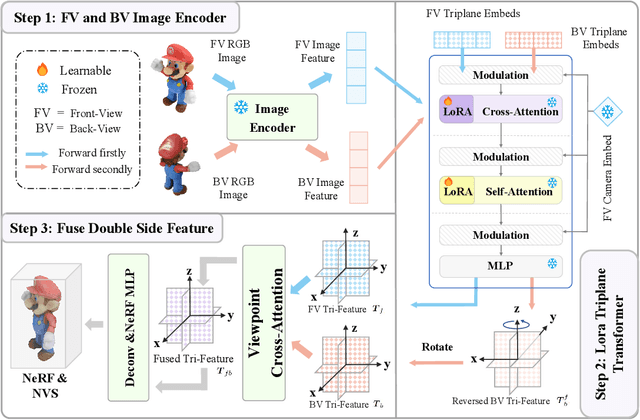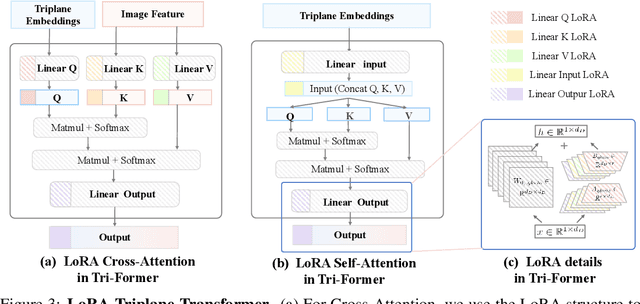Long Xing
MiniMax-01: Scaling Foundation Models with Lightning Attention
Jan 14, 2025Abstract:We introduce MiniMax-01 series, including MiniMax-Text-01 and MiniMax-VL-01, which are comparable to top-tier models while offering superior capabilities in processing longer contexts. The core lies in lightning attention and its efficient scaling. To maximize computational capacity, we integrate it with Mixture of Experts (MoE), creating a model with 32 experts and 456 billion total parameters, of which 45.9 billion are activated for each token. We develop an optimized parallel strategy and highly efficient computation-communication overlap techniques for MoE and lightning attention. This approach enables us to conduct efficient training and inference on models with hundreds of billions of parameters across contexts spanning millions of tokens. The context window of MiniMax-Text-01 can reach up to 1 million tokens during training and extrapolate to 4 million tokens during inference at an affordable cost. Our vision-language model, MiniMax-VL-01 is built through continued training with 512 billion vision-language tokens. Experiments on both standard and in-house benchmarks show that our models match the performance of state-of-the-art models like GPT-4o and Claude-3.5-Sonnet while offering 20-32 times longer context window. We publicly release MiniMax-01 at https://github.com/MiniMax-AI.
PyramidDrop: Accelerating Your Large Vision-Language Models via Pyramid Visual Redundancy Reduction
Oct 22, 2024Abstract:In large vision-language models (LVLMs), images serve as inputs that carry a wealth of information. As the idiom "A picture is worth a thousand words" implies, representing a single image in current LVLMs can require hundreds or even thousands of tokens. This results in significant computational costs, which grow quadratically as input image resolution increases, thereby severely impacting the efficiency of both training and inference. Previous approaches have attempted to reduce the number of image tokens either before or within the early layers of LVLMs. However, these strategies inevitably result in the loss of crucial image information, ultimately diminishing model performance. To address this challenge, we conduct an empirical study revealing that all visual tokens are necessary for LVLMs in the shallow layers, and token redundancy progressively increases in the deeper layers of the model. To this end, we propose PyramidDrop, a visual redundancy reduction strategy for LVLMs to boost their efficiency in both training and inference with neglectable performance loss. Specifically, we partition the LVLM into several stages and drop part of the image tokens at the end of each stage with a pre-defined ratio, creating pyramid-like visual tokens across model layers. The dropping is based on a lightweight similarity calculation with a negligible time overhead. Extensive experiments demonstrate that PyramidDrop can achieve a 40% training time and 55% inference FLOPs acceleration of LLaVA-NeXT with comparable performance. Besides, the PyramidDrop could also serve as a plug-and-play strategy for inference acceleration without training, with better performance and lower inference cost than counterparts. We hope that the insights and approach introduced by PyramidDrop will inspire future research to further investigate the role of image tokens in LVLMs.
Tailor3D: Customized 3D Assets Editing and Generation with Dual-Side Images
Jul 08, 2024



Abstract:Recent advances in 3D AIGC have shown promise in directly creating 3D objects from text and images, offering significant cost savings in animation and product design. However, detailed edit and customization of 3D assets remains a long-standing challenge. Specifically, 3D Generation methods lack the ability to follow finely detailed instructions as precisely as their 2D image creation counterparts. Imagine you can get a toy through 3D AIGC but with undesired accessories and dressing. To tackle this challenge, we propose a novel pipeline called Tailor3D, which swiftly creates customized 3D assets from editable dual-side images. We aim to emulate a tailor's ability to locally change objects or perform overall style transfer. Unlike creating 3D assets from multiple views, using dual-side images eliminates conflicts on overlapping areas that occur when editing individual views. Specifically, it begins by editing the front view, then generates the back view of the object through multi-view diffusion. Afterward, it proceeds to edit the back views. Finally, a Dual-sided LRM is proposed to seamlessly stitch together the front and back 3D features, akin to a tailor sewing together the front and back of a garment. The Dual-sided LRM rectifies imperfect consistencies between the front and back views, enhancing editing capabilities and reducing memory burdens while seamlessly integrating them into a unified 3D representation with the LoRA Triplane Transformer. Experimental results demonstrate Tailor3D's effectiveness across various 3D generation and editing tasks, including 3D generative fill and style transfer. It provides a user-friendly, efficient solution for editing 3D assets, with each editing step taking only seconds to complete.
 Add to Chrome
Add to Chrome Add to Firefox
Add to Firefox Add to Edge
Add to Edge